For months, there have been hints of a new flashlight from Nitecore, but specific details have been kept top secret. That’s now changed, as the new model has been officially announced: Here is the new Nitecore EDC37.
Nitecore’s new flagship from the EDC series combines the experience gained from previous models. The compact flashlight delivers up to 8000 lm from two UHi 20 MAX LEDs and offers a great user experience with its OLED display, two dual-stage buttons and mechanical lockout switch.
You can find the German version of this review on my website: SammysHP › Nitecore EDC37
The flashlight was provided by the manufacturer for this review. Thank you very much!
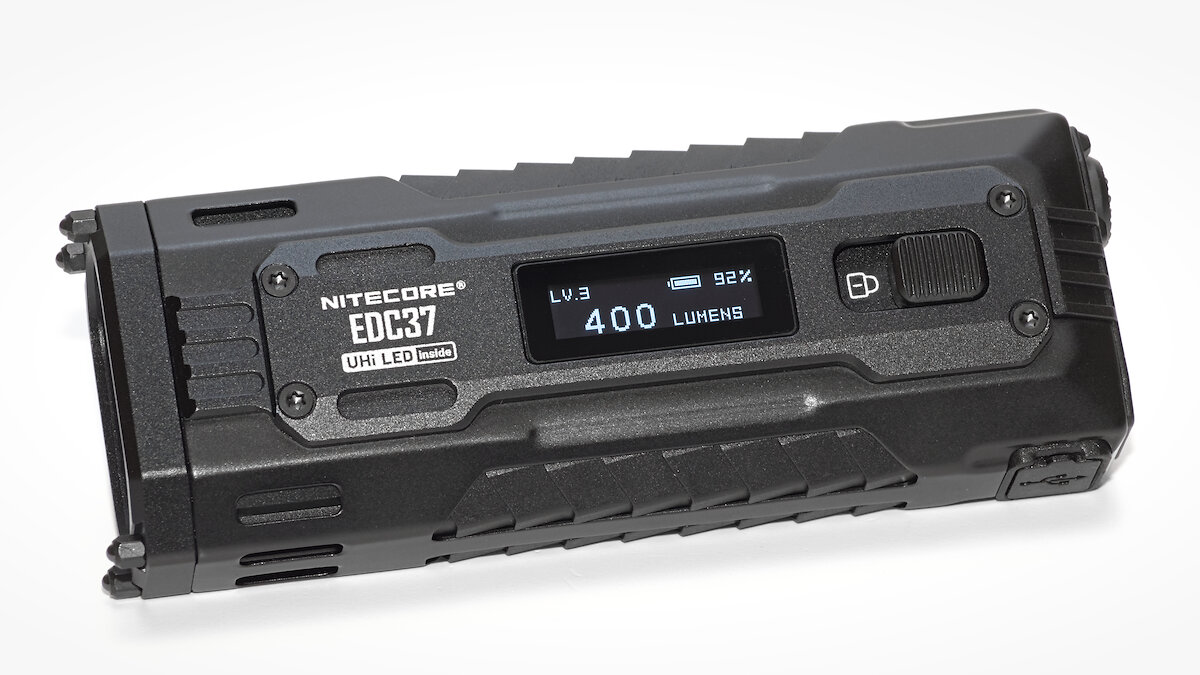
Overview
Due to the flashlight’s monolithic design, you wouldn’t expect much accessories. That makes the eight small screws and the included mounting tool even more surprising. More on that later.
- Lanyard (paracord with carabiner)
- USB-C charging cable
- 8x replacement screws
- Assembly tool
- Manual (EN, DE, FR, RU, JP, KO, IT, UA, CN)
The battery is built-in, and the clip comes pre-installed. The manual explains the flashlight’s functions in detail and in a clear manner, although much of it can be figured out just by experimenting.
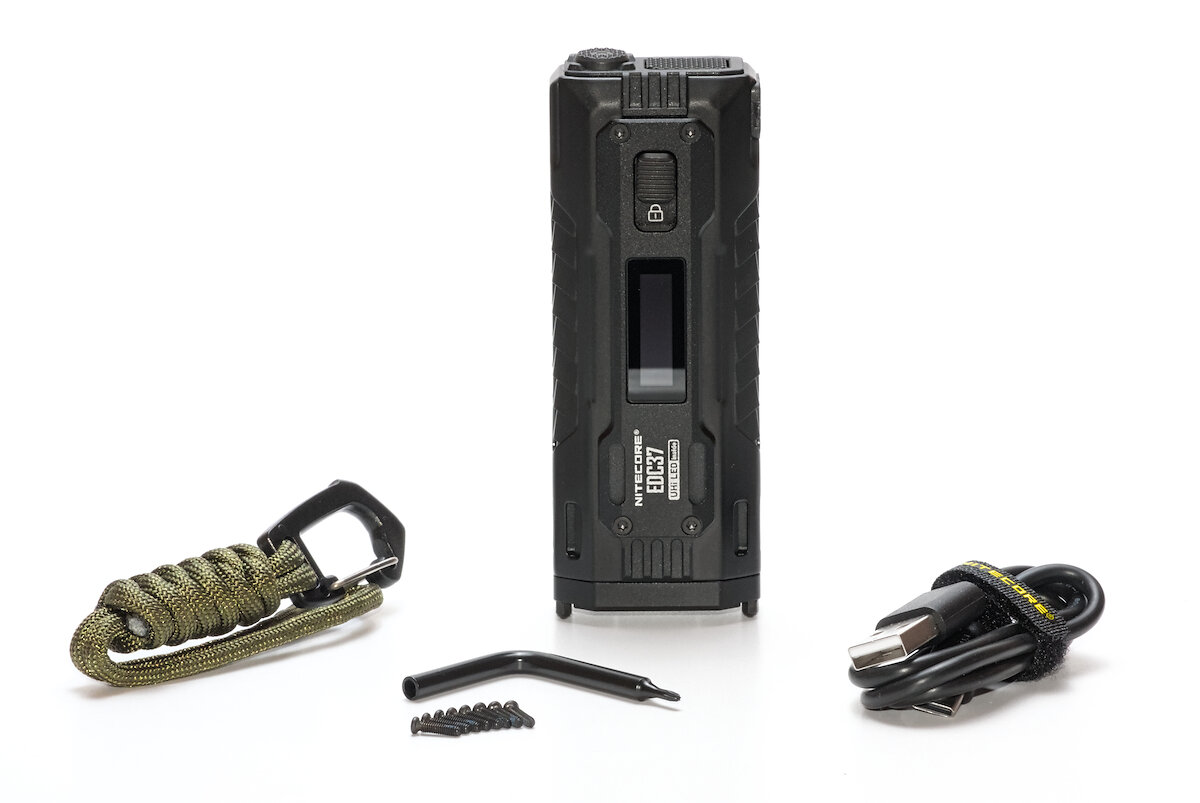
For its performance class, the EDC37 is unexpectedly compact at only 105 × 39 × 27 mm. In length it is nearly the same as the EDC23, although somewhat thicker. With a weight of 199 g, it’s still light enough to carry comfortably in your pocket.
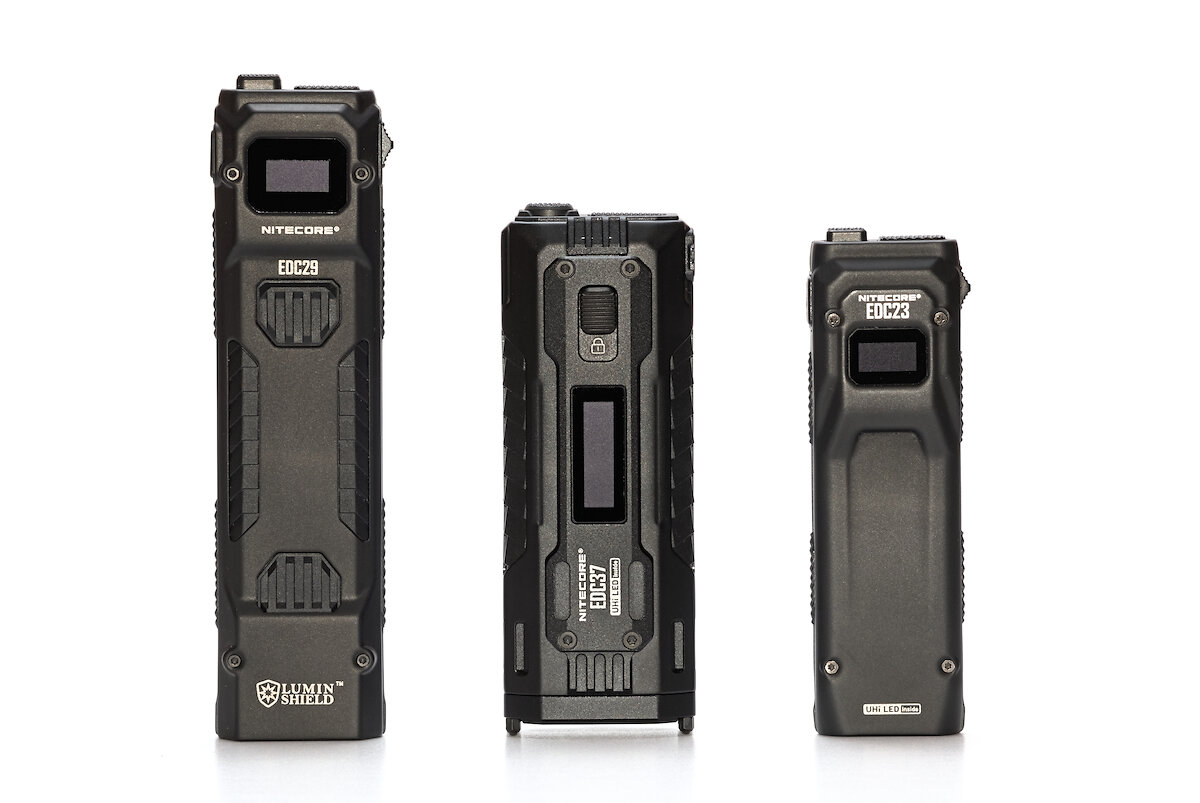
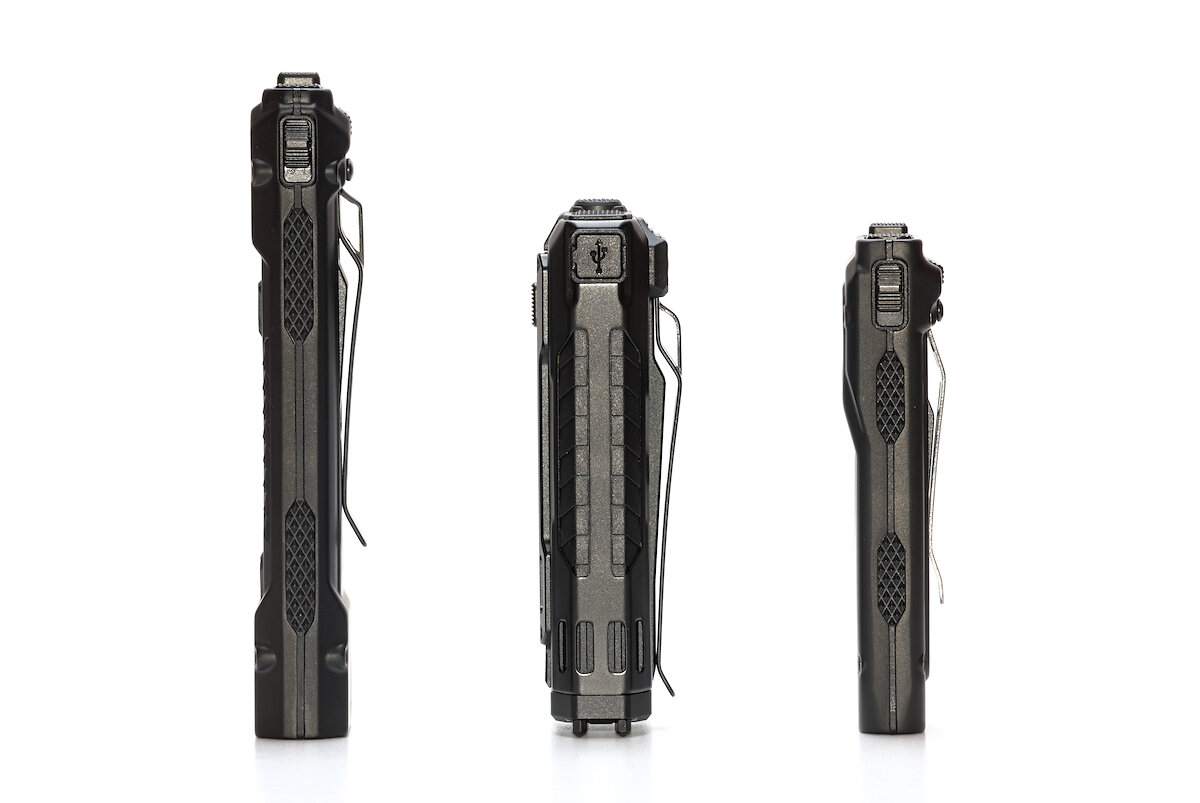
The design of the EDC37 incorporates many elements from earlier models in the EDC series. It features an octagonal base shape with two side-by-side emitters.
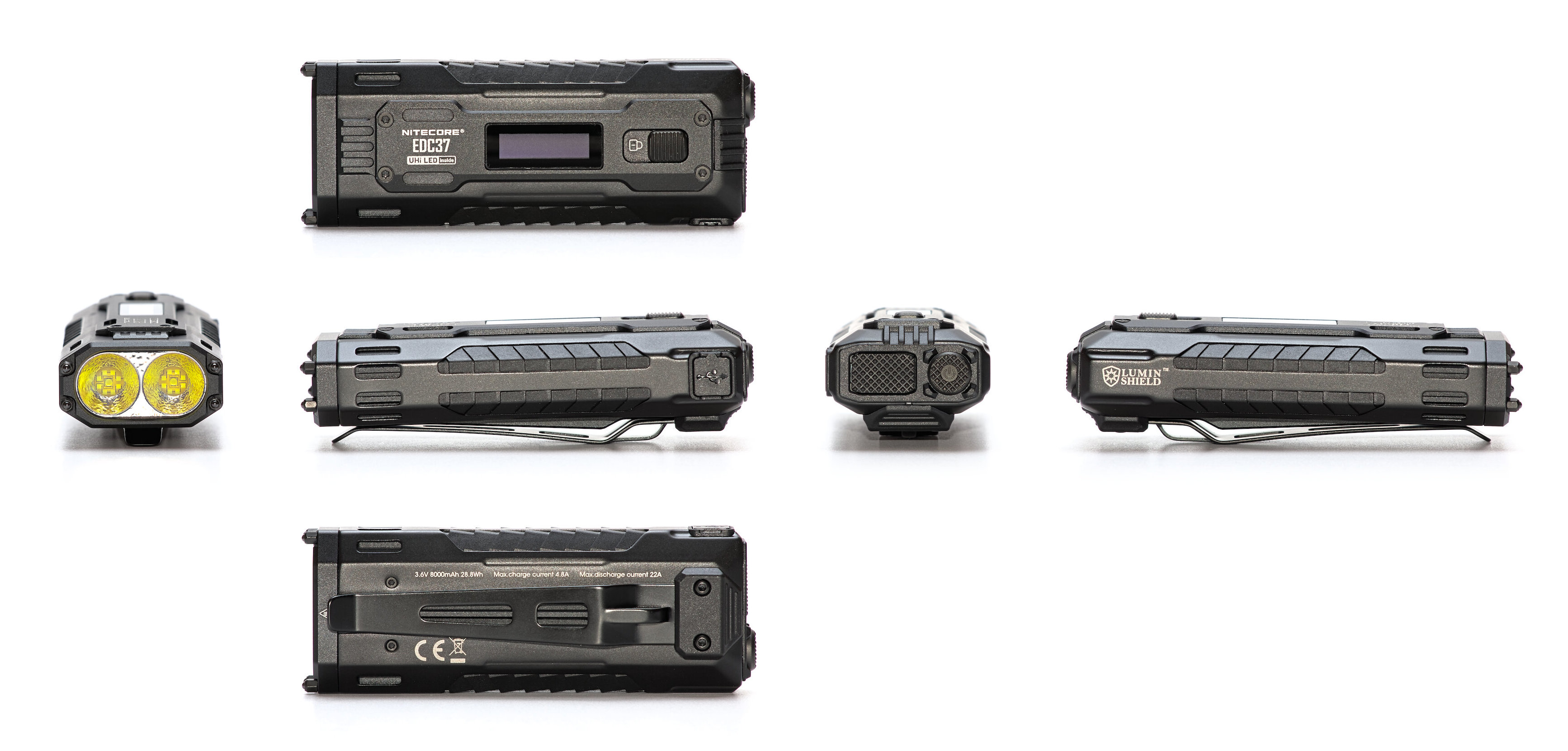
The display has been rotated 90° and is now read from the side. There’s no automatic screen rotation based on the flashlight’s orientation. Additionally, the switch for the lockout function has been moved from the side to the front.

For improved grip, the sides feature textured zones made of plastic with a scale-like pattern, similar to what’s already known from the EDC29.
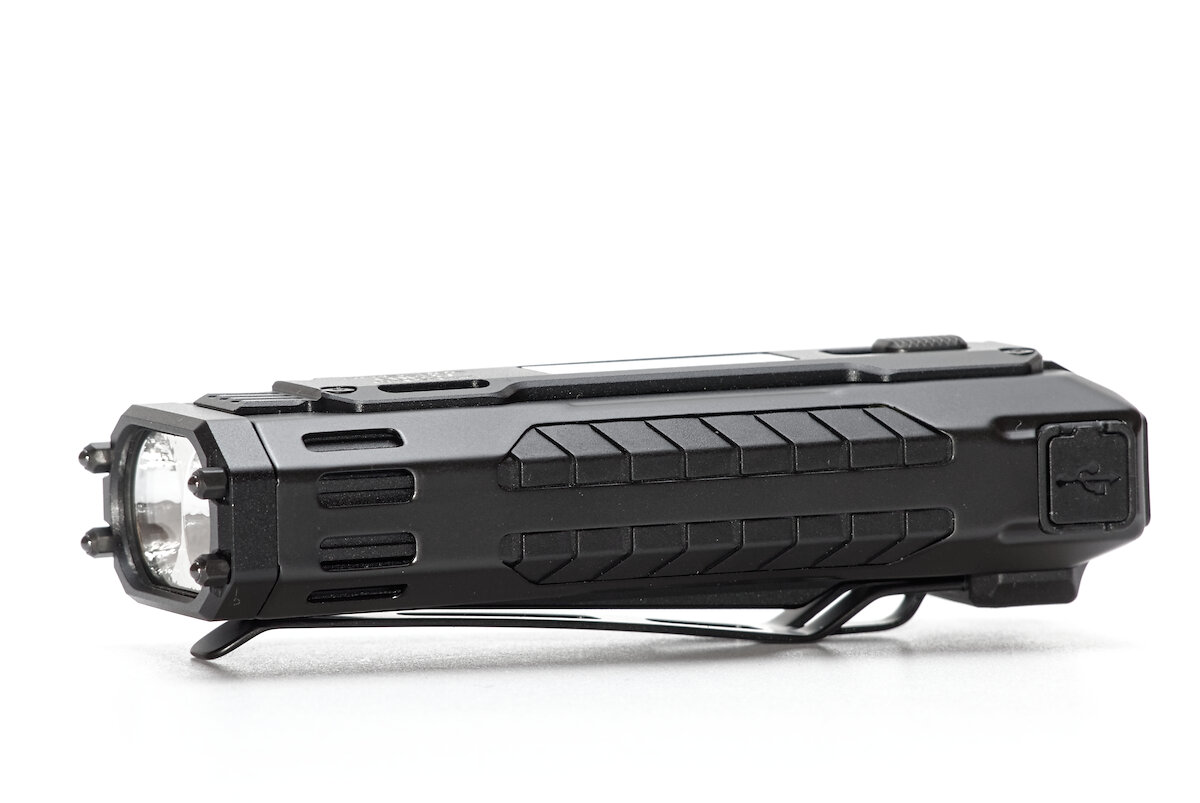
At the front of the bezel, there are four screws with integrated silicon nitride balls. These serve as glass breakers, allowing you to shatter windows in an emergency.
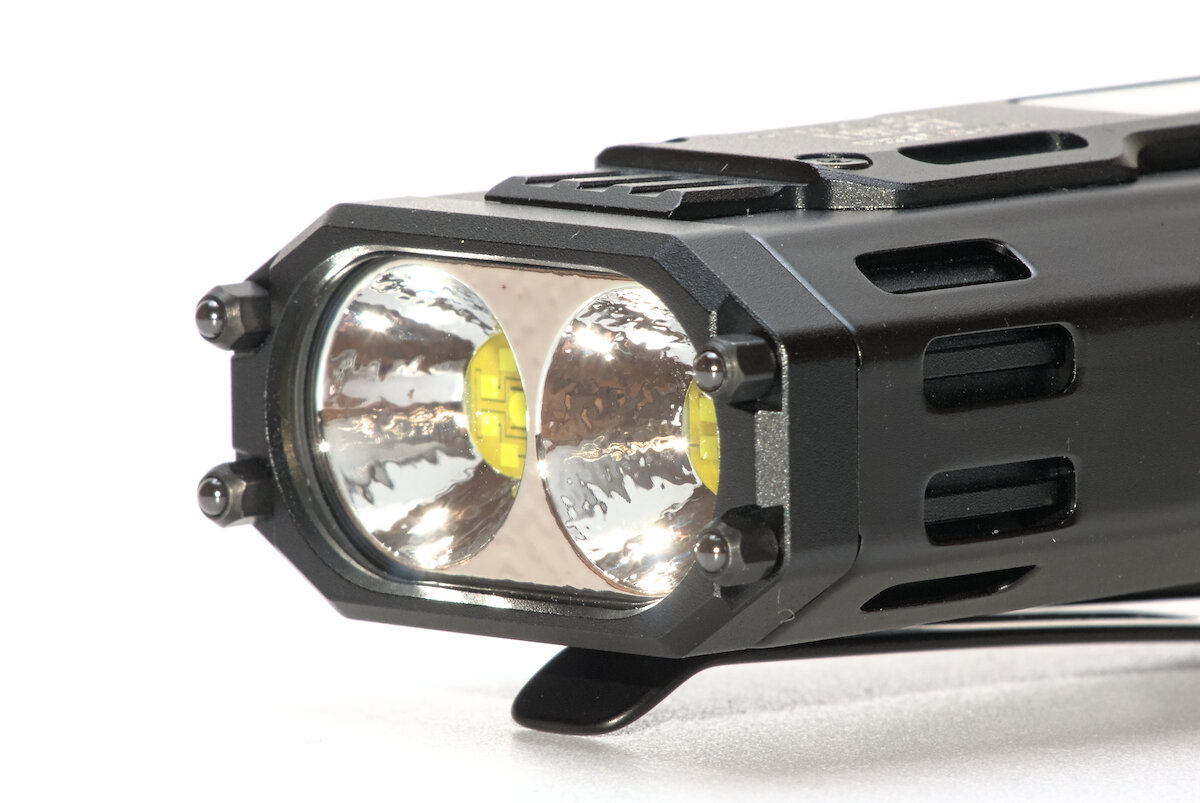
If you don’t need this feature and prefer a more discreet appearance, the four screws can be replaced. Flat replacement screws and the appropriate tool are included in the package.
When replacing the screws, the bezel and the glass come off the flashlight. I recommend swapping out one screw at a time to keep everything in place.
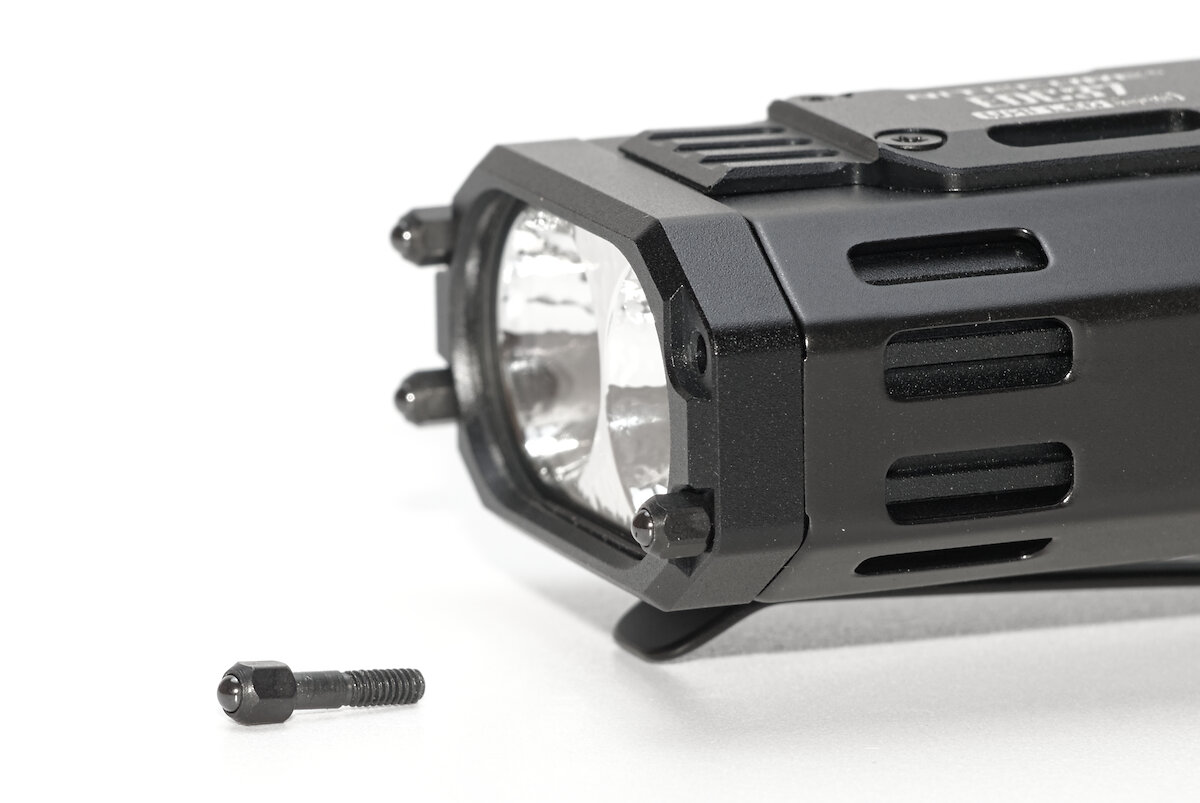
At 8000 lumens, even with efficient LEDs, a lot of heat is generated, which is dissipated through a sophisticated thermal management system. To prevent burns, the heat sink is covered by a metal shield. Ventilation holes allow air to circulate for cooling.
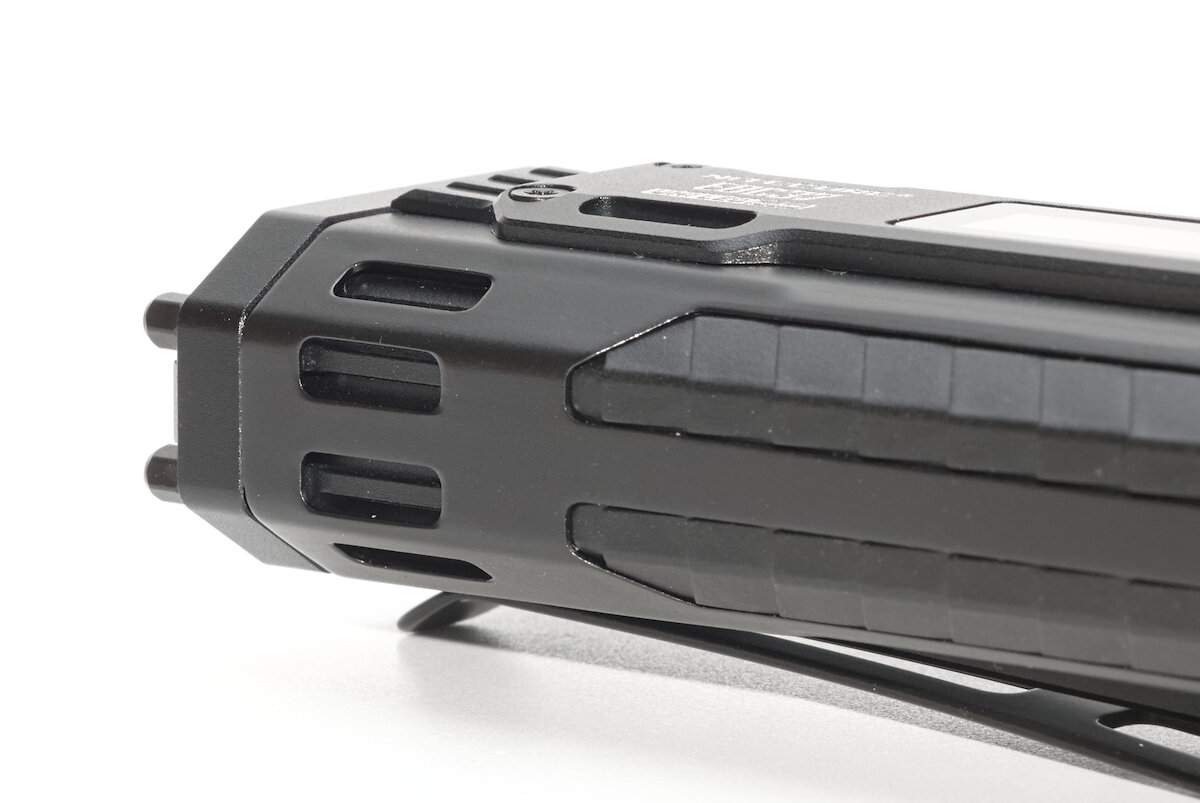
The heat sink extends along the entire underside of the flashlight. Here, the clip prevents direct contact with the hot surface. This system is already familiar from previous models in the EDC series. The two T6 screws secure not only the clip but also the heat sink.
To fulfill its protective function, the clip extends nearly the entire length of the flashlight. This can sometimes make inserting it into a pocket a bit tricky.
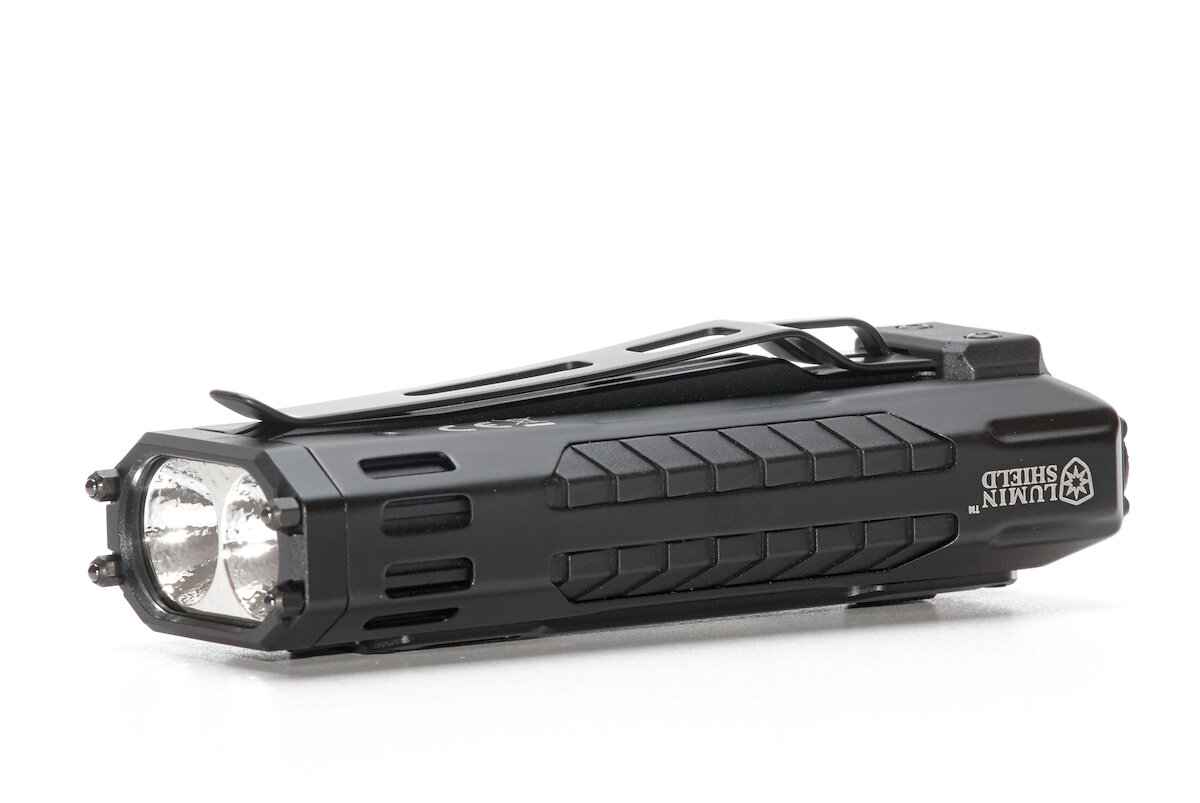
At the rear end of the clip, there’s a loop for attaching a lanyard. Because of this, the EDC37 sticks out about 30 mm when carried in a pocket, roughly a third of its total length.
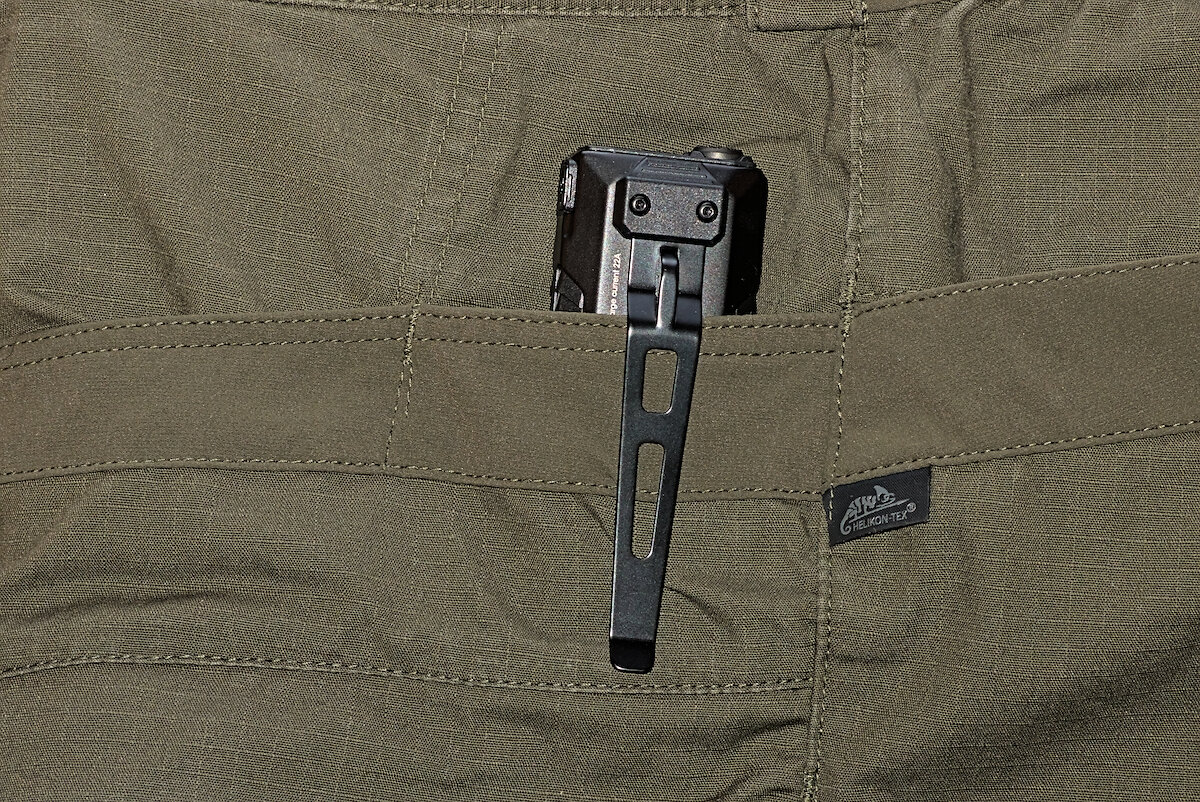
At the tail end of the flashlight, you’ll find the two buttons, which I will explain in the next section.
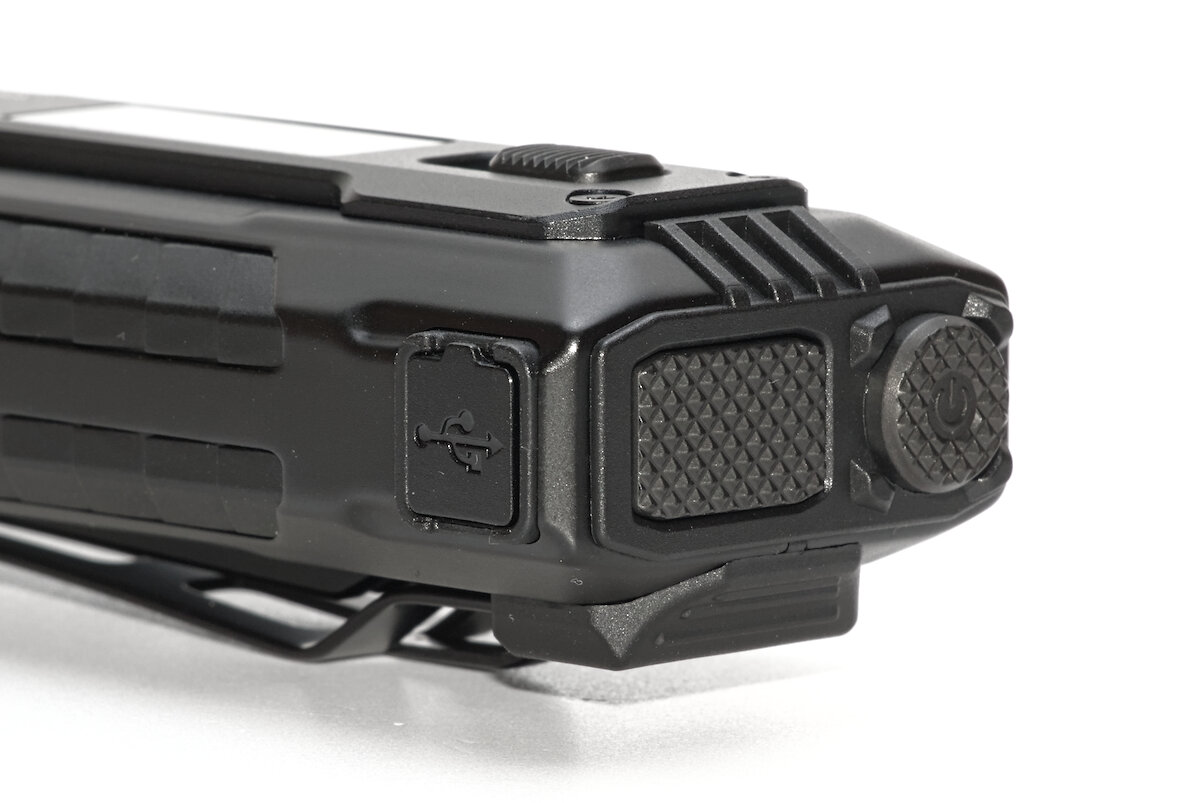
The flashlight is charged via a USB-C port. A cover provides some protection against dirt and water. Its outer side is made of sturdy plastic, while the inner half is silicone. This ensures a good seal while still being easy and comfortable to open and close.
To reduce charging time, the EDC37 can be charged with up to 20 W at 9 V using a compatible USB power supply. Thanks to this fast-charging feature, the built-in 8000 mAh Li-ion battery is fully charged in just two hours. You can always check the current progress in percent on the OLED display. During charging, the flashlight can be used normally – except for the Search, Lumin Shield, and Strobe modes.
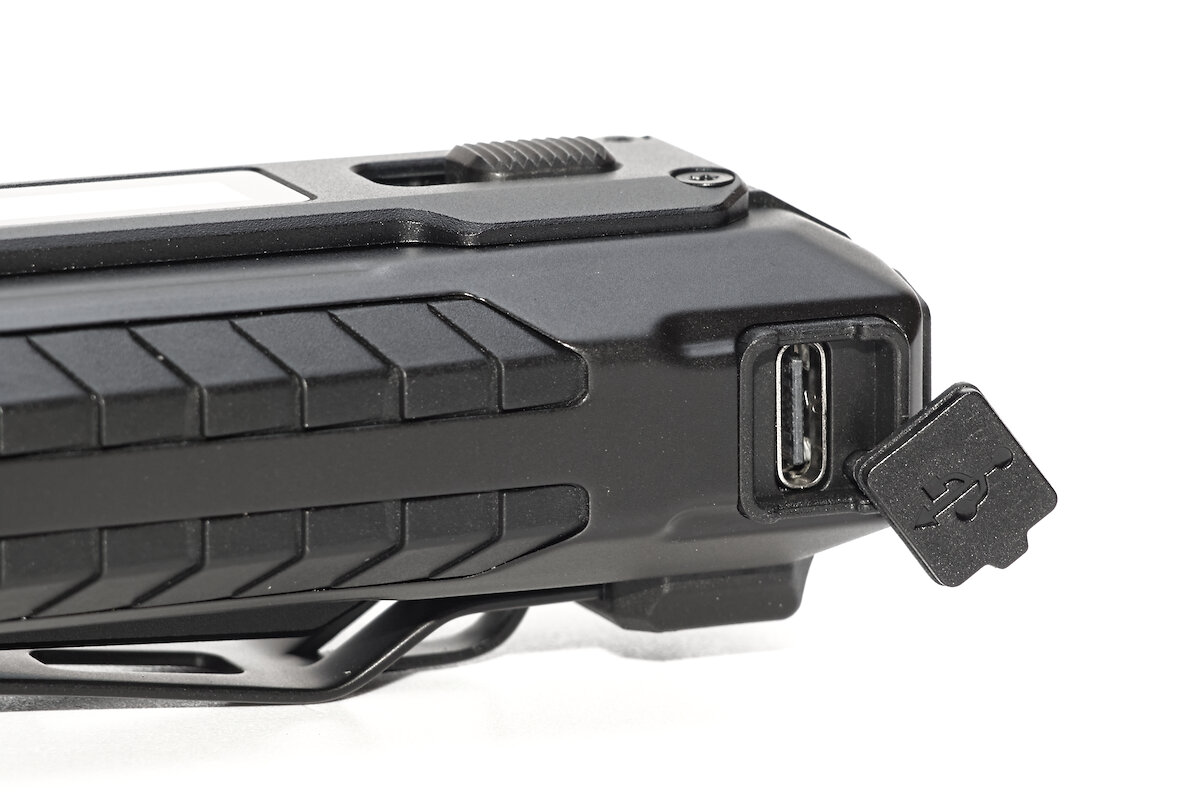
Eventually, the battery’s performance will naturally decline. Since it’s built-in and non-replaceable, this also means the end of the flashlight. It’s a compromise you have to accept with most flashlights of this design. A more repair-friendly approach would definitely have been a good idea.
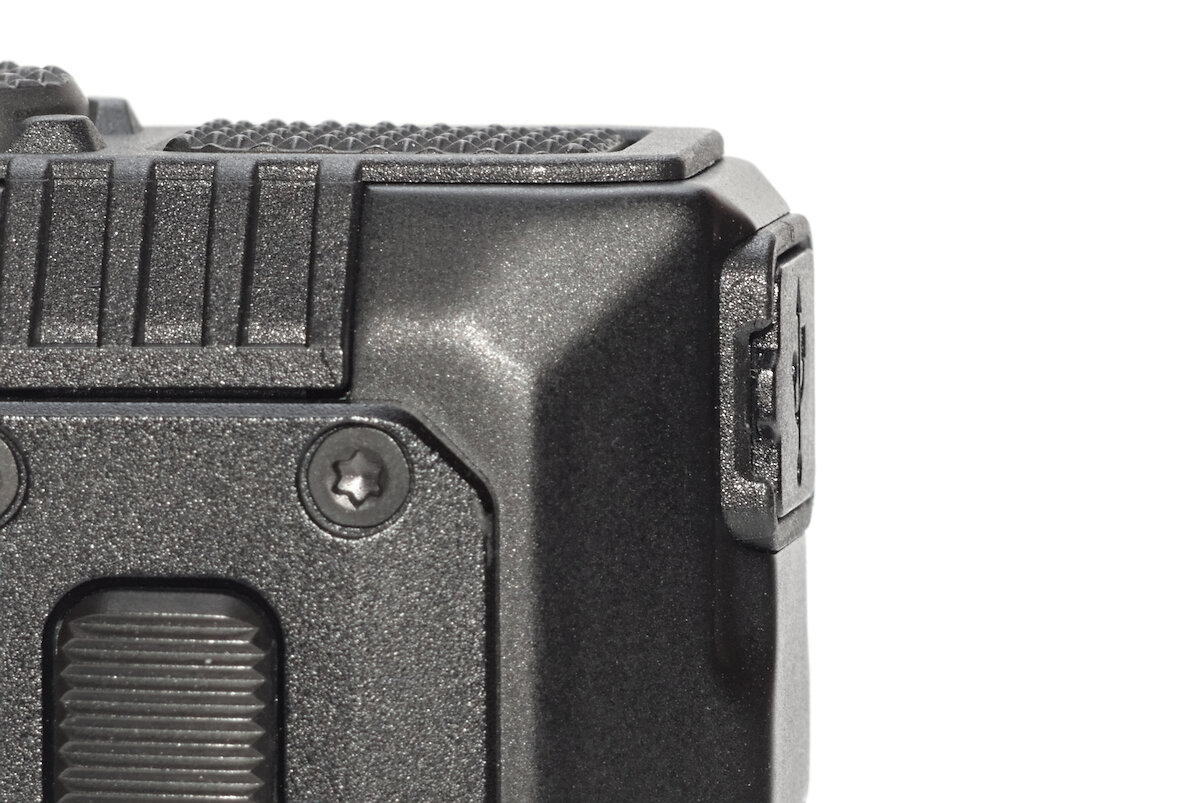
Overall, the build quality gives me a solid, high-end impression. However, I’m a bit concerned about the water resistance, since it’s rated only IP54. The last digit refers to water protection, which in this case means “protection against water splashes from any direction.” A few raindrops won’t be a problem for the EDC37, but if it ends up in a puddle, it could get damaged. A tactical flashlight should really be able to handle more than that.
User interface
From a “tactical” flashlight I expect a well thought-out user interface that allows for reliable operation even in stressful situations. Quick access to turbo and maybe strobe as well as a predictable brightness when turning it on (either always start at the same brightness or reliable memory) are useful.
The EDC37 features two buttons plus a switch for the lockout function. The slightly protruding power button is surrounded by four small raised bumps. The flat mode button sits flush with the body, providing some protection against accidental activation. Both buttons have two stages of operation. They are made of plastic and have an anti-slip knurling.
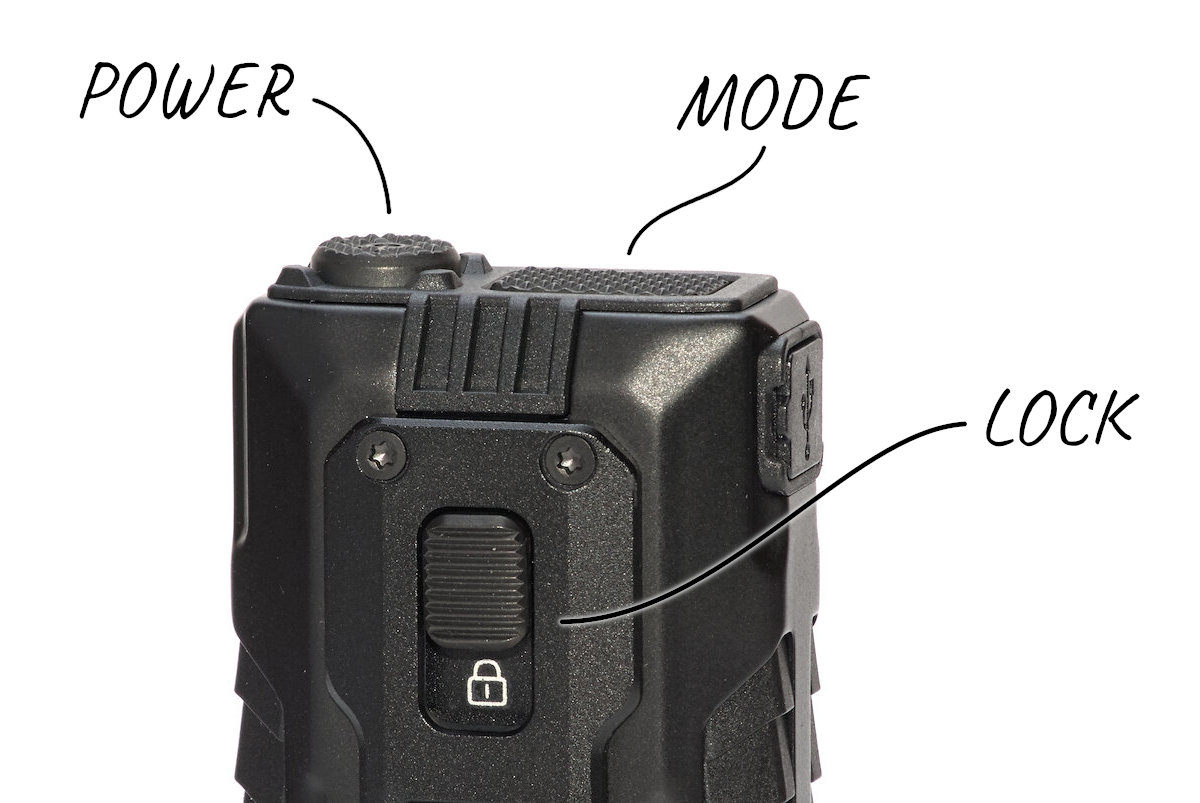
A full press of the power button to the second stage (requiring 1200 g of force) turns the flashlight on and off. When the light is on, a short tap to the first stage (250 g) allows you to cycle through four brightness levels Ultralow, Low, Mid, and High.
If you tap the button while the flashlight is off, you can pre-select the brightness level (which is shown on the display). Holding the power button at the first stage temporarily activates the Ultralow mode, whether the flashlight is on or off (for example, to quickly check a document without being blinded by bright light).
The two stages of the mode button can be programmed. It provides momentary direct access to the Search, Lumin Shield or Strobe modes. The first stage requires about 450 g of force, while the second stage needs roughly 800 g.
While using Search and Lumin Shield modes, a bar on the display shows the remaining runtime – and it moves fast! When the flashlight is cold, you get about 16 seconds in Search and 10 seconds in Lumin Shield of continuous use before it steps down to a lower brightness level. Once you release the button, the progress bar slowly refills depending on the temperature. So if the flashlight is already warm, your usage time will be shorter. Since I only use the turbo modes briefly, the short runtime hasn’t really bothered me. After all, it’s truly a turbo mode and not meant to run continuously (for that, you’d need a bigger flashlight). When you release the mode button, the flashlight switches back to the previous mode.
To program the mode button, first press it to the desired stage. Then, fully press the power button to cycle through the three available functions. You can also assign the same function to both stages if you prefer.
With the strobe mode, not only is the frequency constantly changing, but the pulse length as well. This makes the strobe especially disorienting.
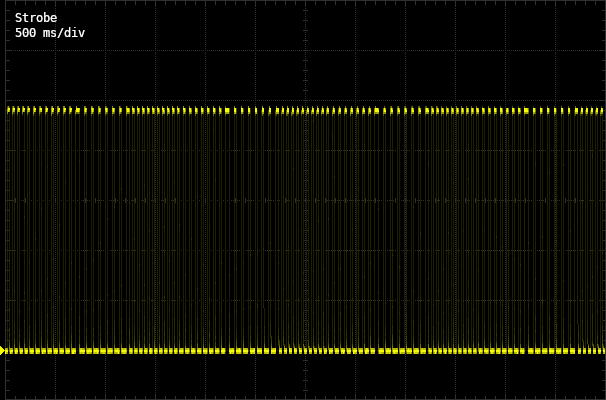
That leaves the lockout switch, called “Rapid Lock”. In the upper position, this sliding switch locks all buttons, preventing accidental activation. Unlike earlier models, there’s no longer a “Semi Lockout” that only disables the power button.
The switch works with a magnetic sensor. That means that the function can be disrupted by a strong magnet, so that the flashlight can either be switched off or the lockout temporarily deactivated. I don’t see this as a disadvantage for normal use.
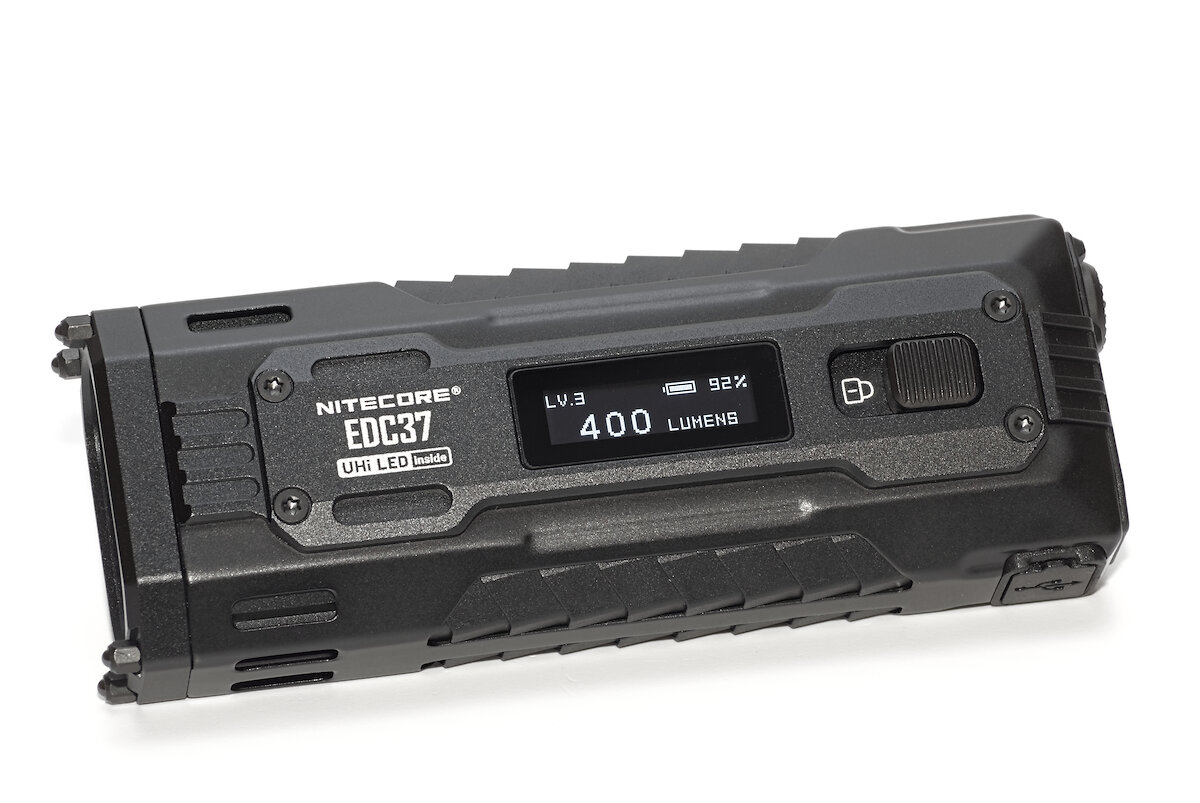
When the flashlight is on, the OLED display shows the current status for ten seconds after each button press. It cycles through the active mode with the brightness level in lumens, followed by the remaining runtime at that level. When the flashlight is off, tapping the power button displays the selected brightness level and the battery percentage for two seconds.
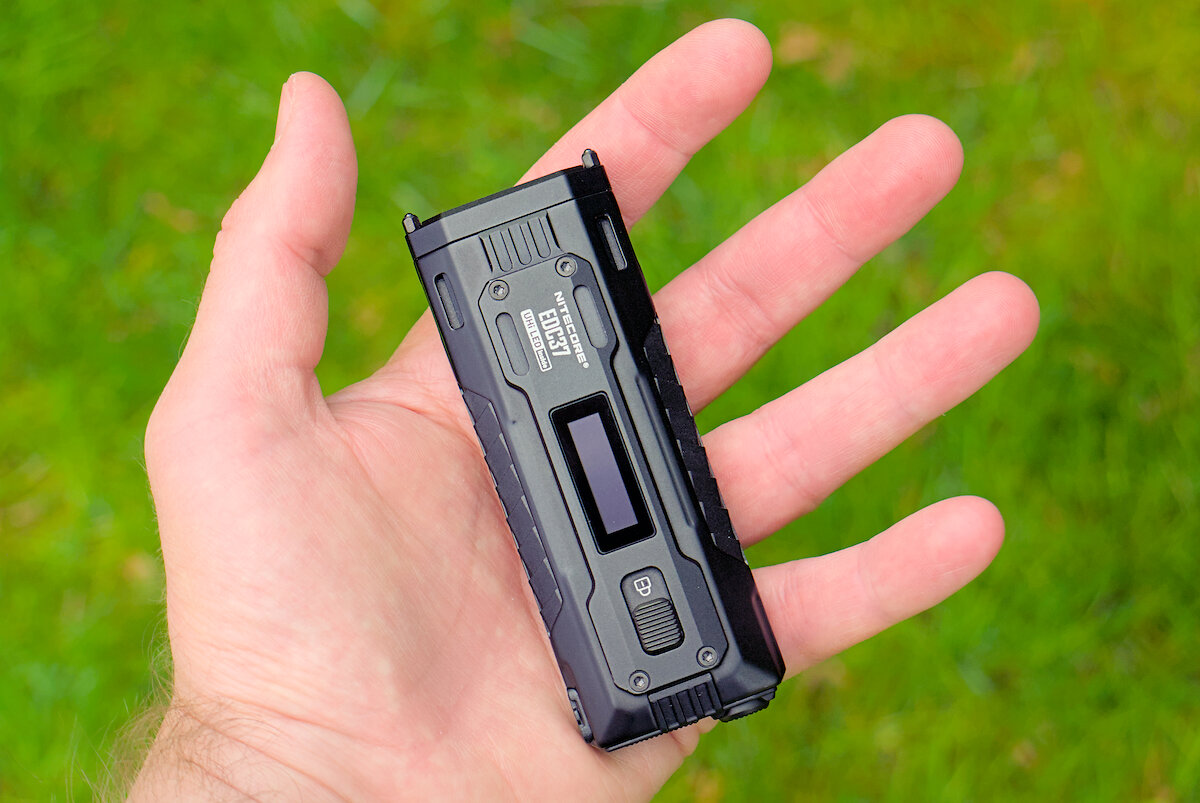
The EDC37 feels comfortable in the hand and can be fully operated with the thumb, no need to change your grip. Any concerns about the lockout switch being hard to reach have definitely been proven wrong.
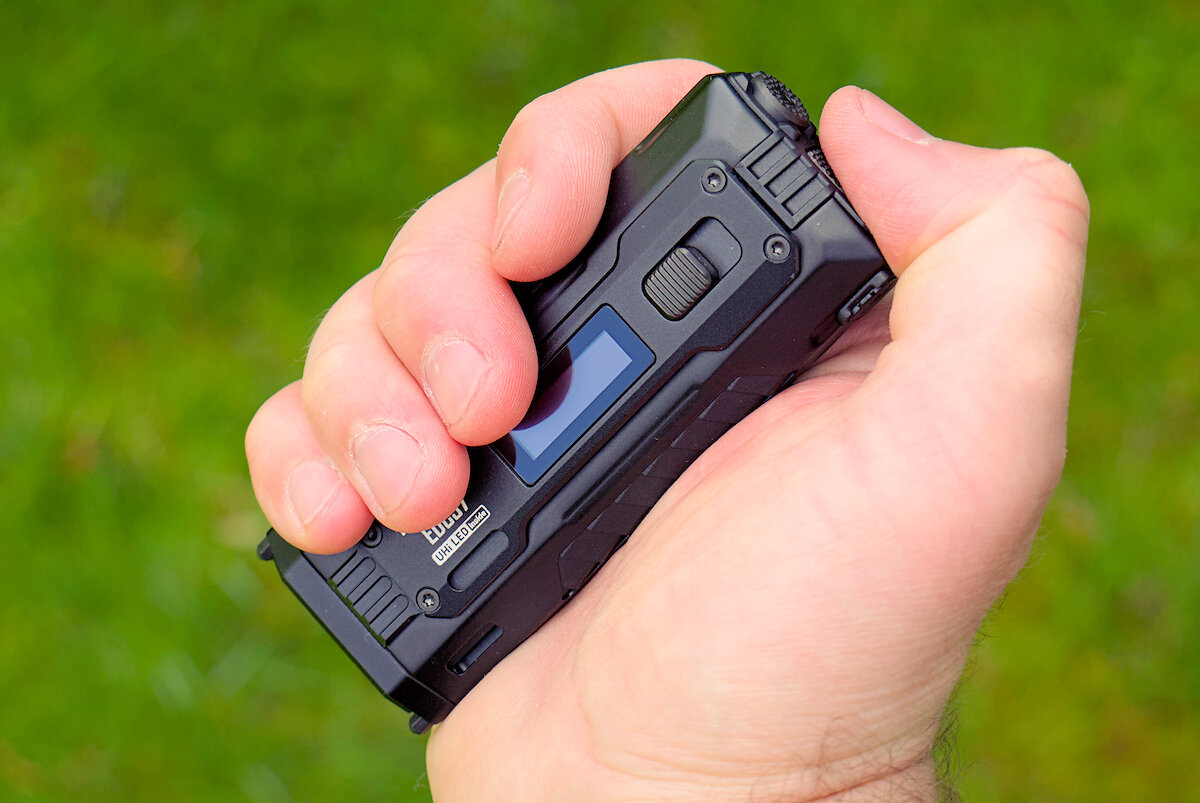

Illumination
The LEDs are a proprietary development by Nitecore called “UHi 20 MAX”, so you won’t find them with any other manufacturer. What’s special about them is that they consist of nine individual light-emitting surfaces, some of which can be controlled independently.

At the center, there’s a single die with a small, round light-emitting surface. This makes it easy to focus and ideal for throw. Surrounding it is a ring of eight additional dies that increase the effective light-emitting surface, giving the LED a much wider, floody beam. The slightly textured “orange peel” reflector smooths the light pattern, causing the outer dies to blend seamlessly together. The glass in front of the emitters features a magenta-colored anti-reflective coating.
In the Ultralow, Low, and Search modes, only the central die is used, producing a relatively narrow beam. In Mid, High, and Lumin Shield modes, the outer dies are activated as well, creating a bright spill. This explains the name “Lumin Shield”: a wall of bright light designed to blind and distract an attacker.
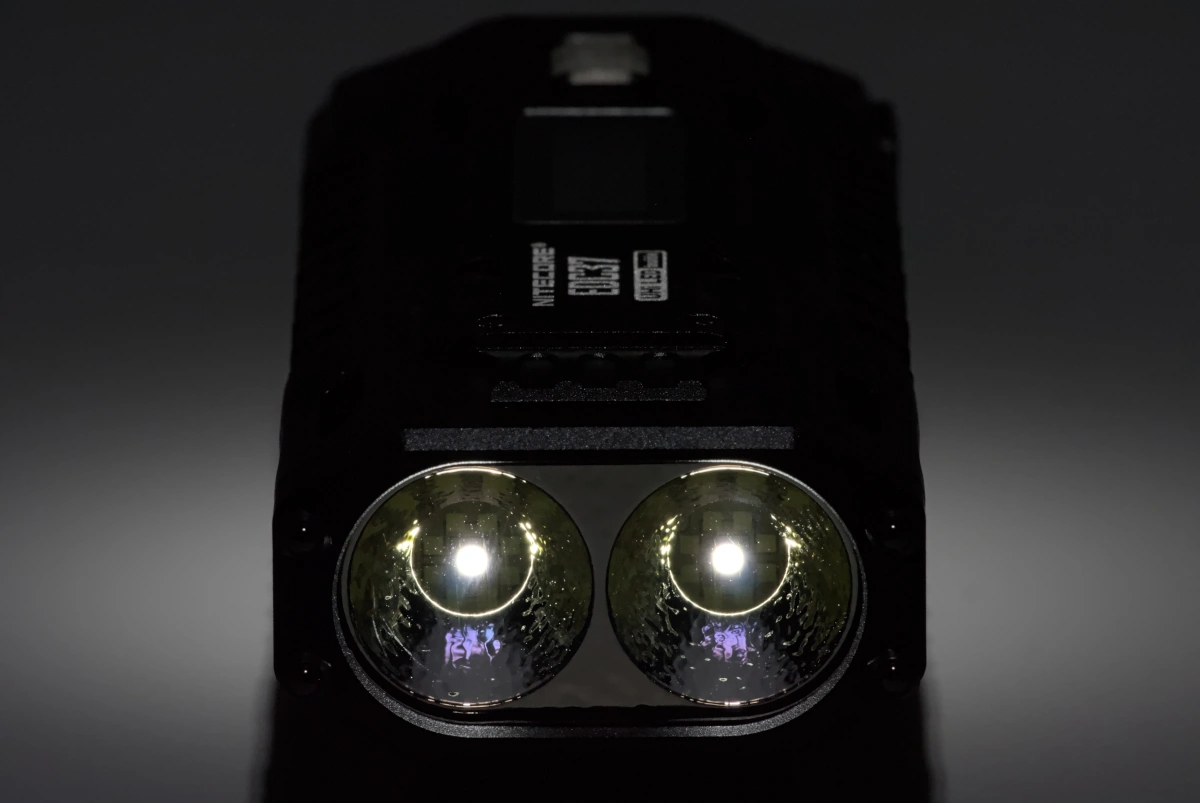
Unfortunately, the choice of which dies are used is fixed to the brightness levels. It would have been handy to be able to switch between a wide and narrow beam at any brightness setting. Especially at low levels and close range, I find the beam a bit too narrow.
The color temperature is around 6000 K depending on the brightness level. At lower levels, there’s a slight greenish tint visible, but this disappears in Search and Lumin Shield modes.



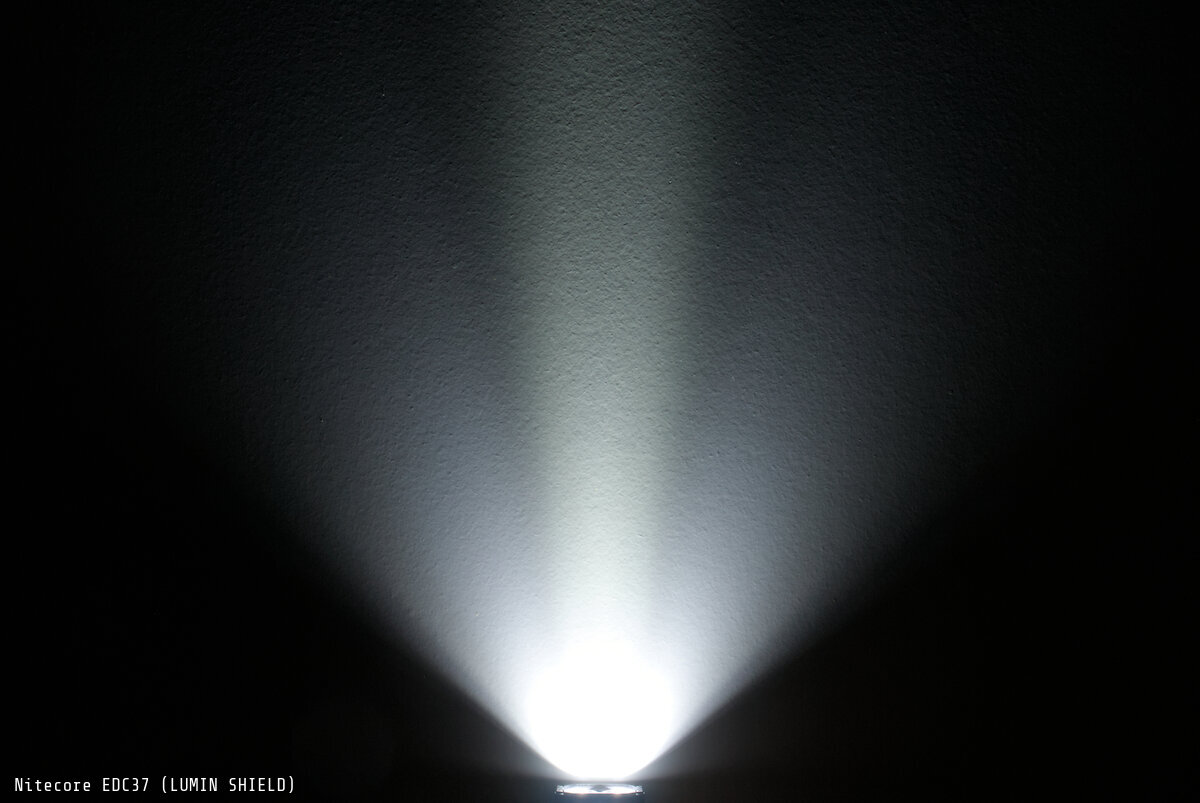
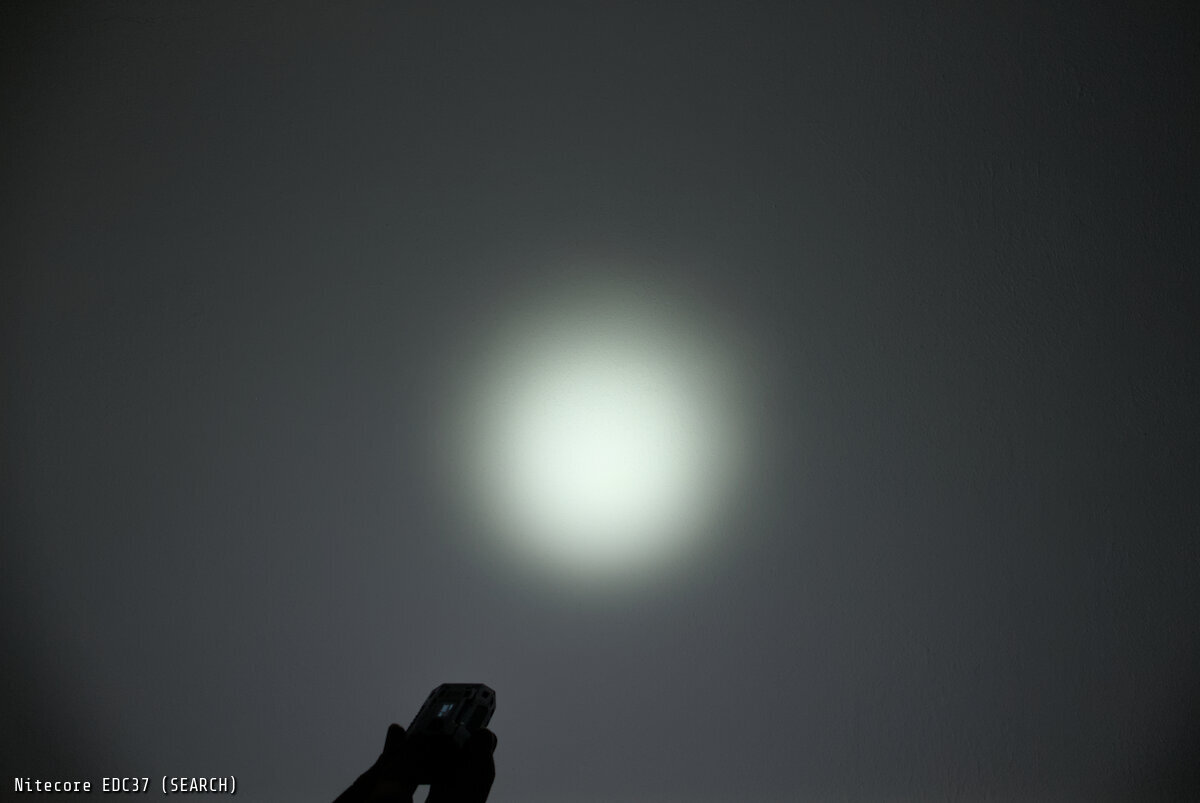
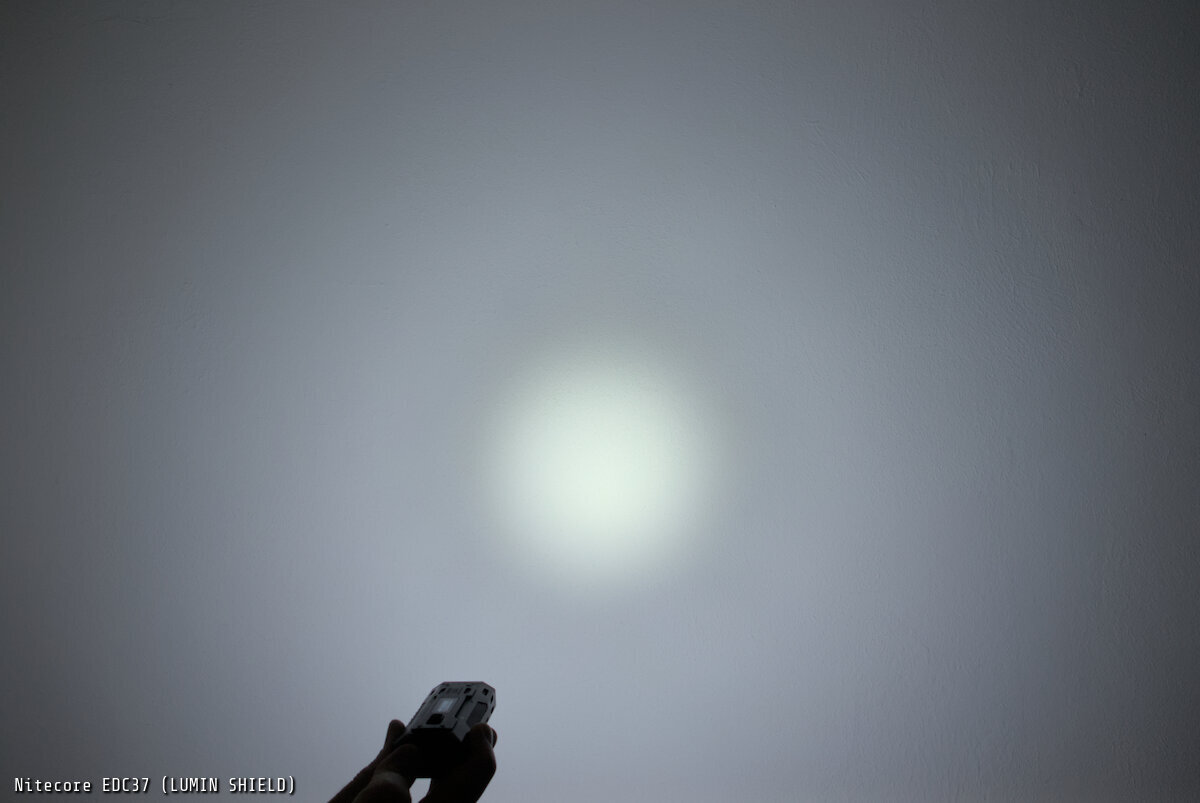
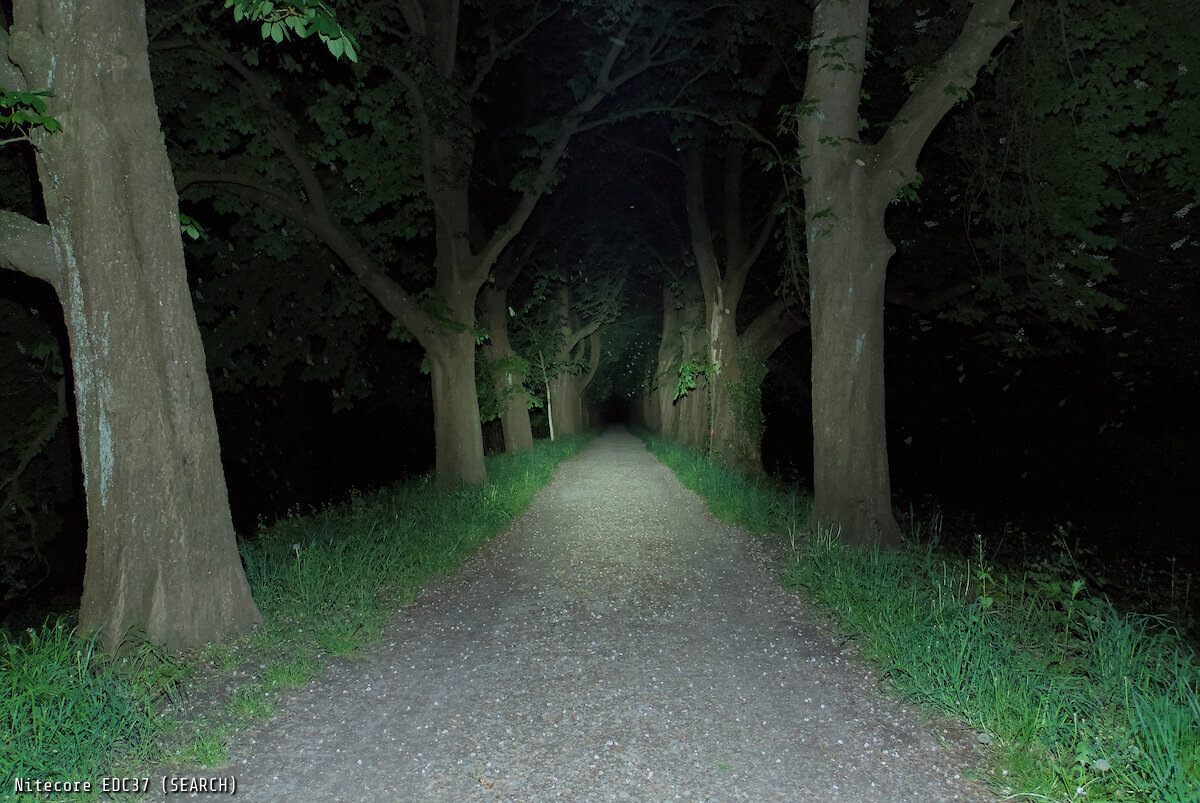

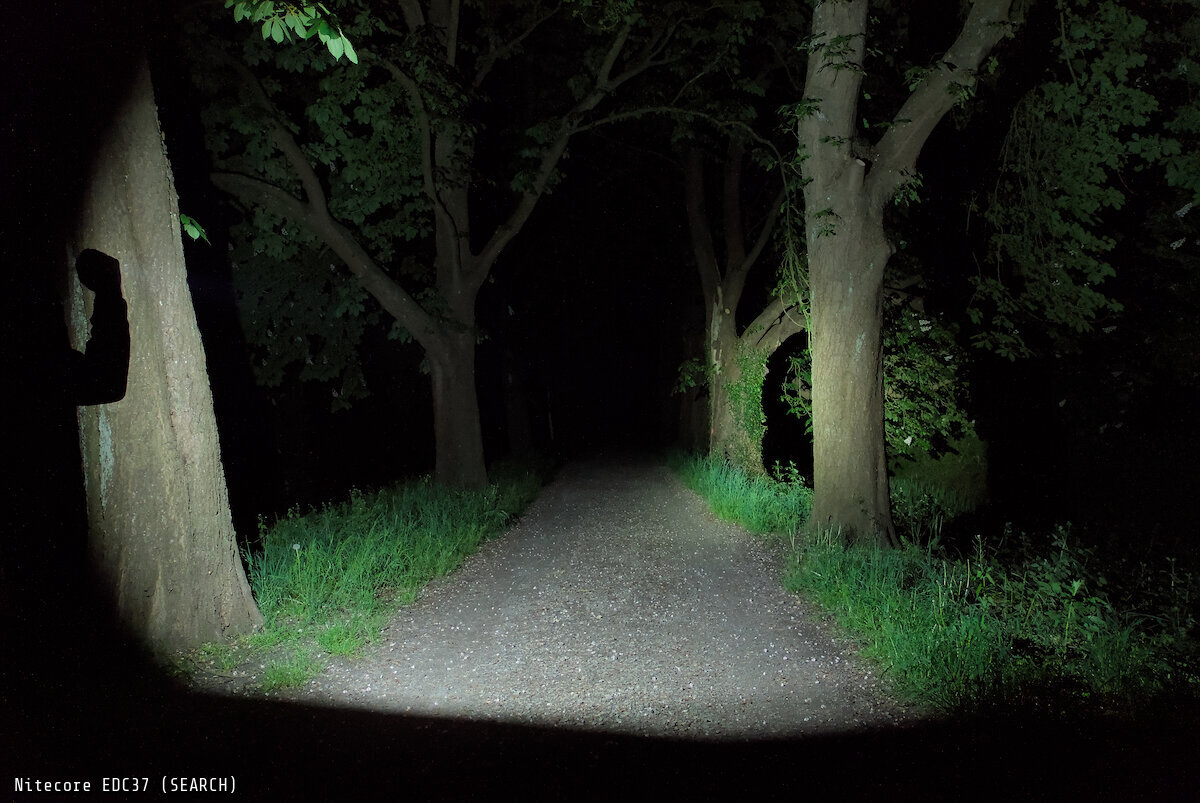
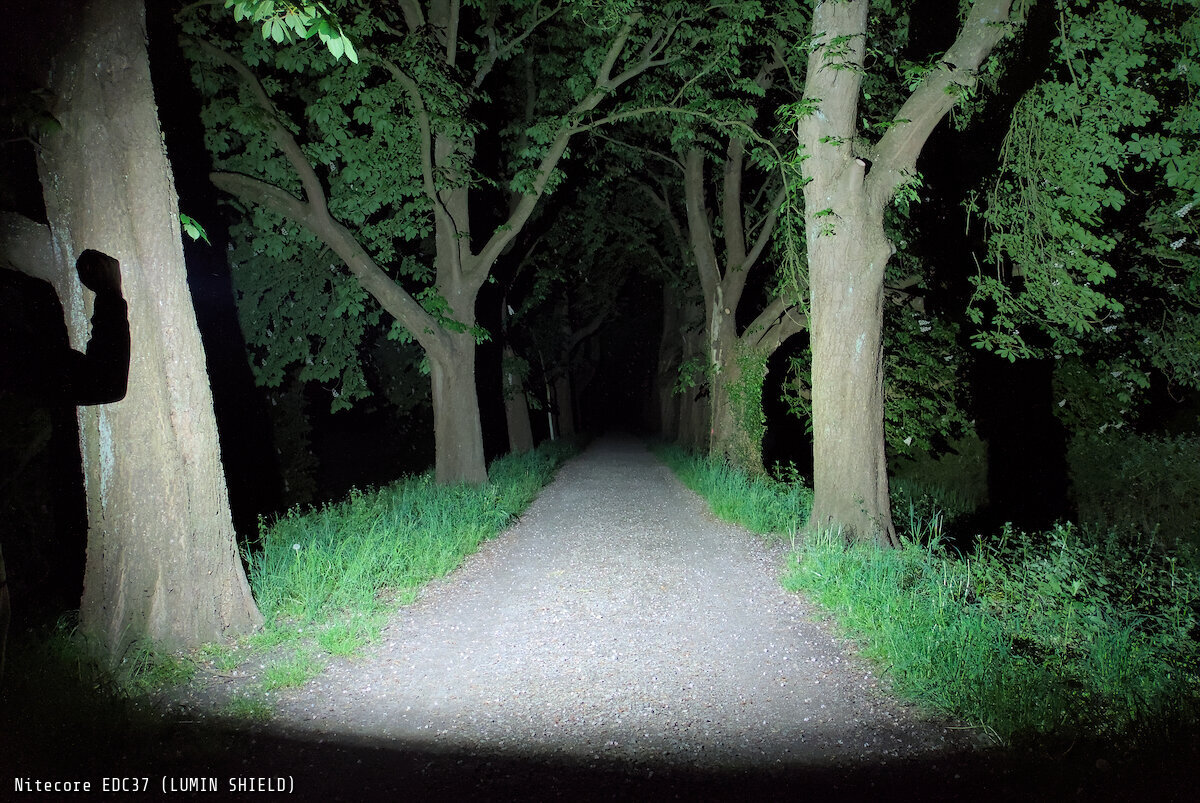
Driver and runtime
An efficient constant current driver ensures consistent brightness at low to medium levels throughout almost the entire runtime. The range in Lumin Shield mode is somewhat less than in Search mode because the current is distributed across all the LEDs at that setting.
| Mode | Brightness¹ | Runtime¹ | Intensity¹ (Throw²) |
|---|---|---|---|
| Lumin Shield | 8000 lm | ––– | 37 550 cd (380 m) |
| Search | 3000 lm | ––– | 44 010 cd (420 m) |
| High | 1500 lm | 7:30 h | 13 740 cd (230 m) |
| Mid | 400 lm | 8:30 h | 3 310 cd (115 m) |
| Low | 100 lm | 30 h | 1 637 cd (80 m) |
| Ultralow | 15 lm | 190 h | 230 cd (30 m) |
¹ According to manufacturer ² ANSI FL1
At higher brightness levels, heat buildup becomes a significant factor. According to the manufacturer, the EDC37 delivers up to 8000 lumens in Lumin Shield mode – although only for a few seconds. In both Search and High modes, the flashlight heats up fairly quickly, requiring a reduction in brightness to prevent overheating.
With the battery nearly fully drained, the flashlight will continue to run for several hours at a very low brightness level (about 11 hours in my test). During this time, it’s possible to temporarily boost the brightness for at least a few seconds.
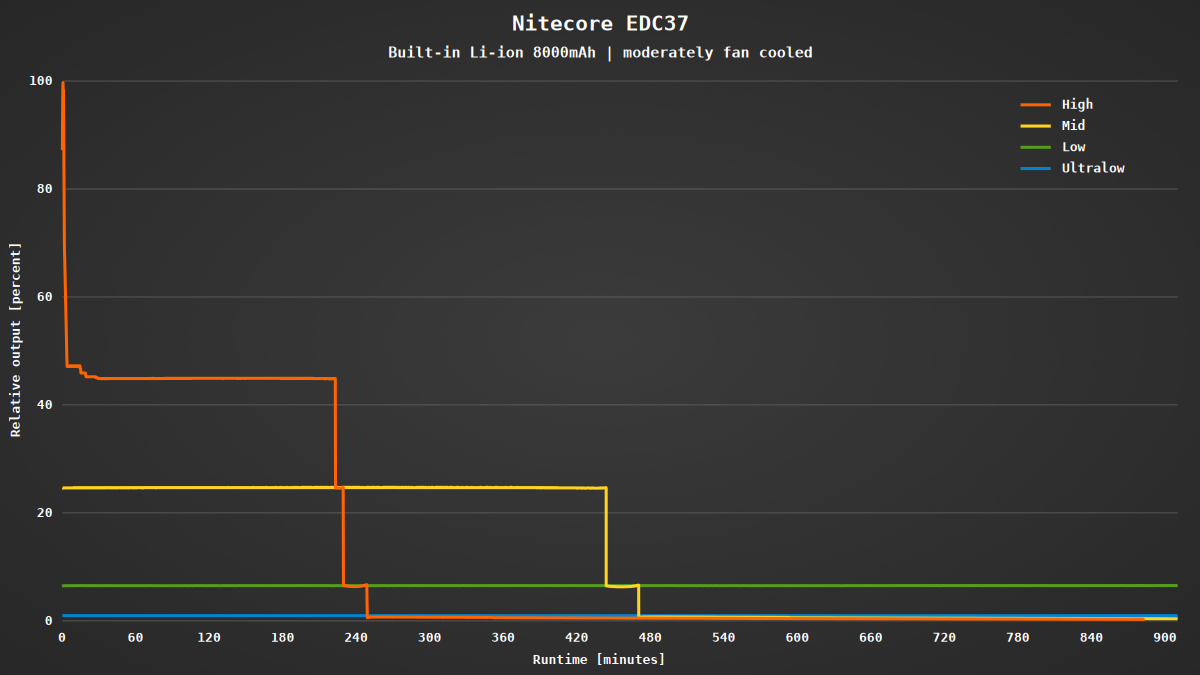
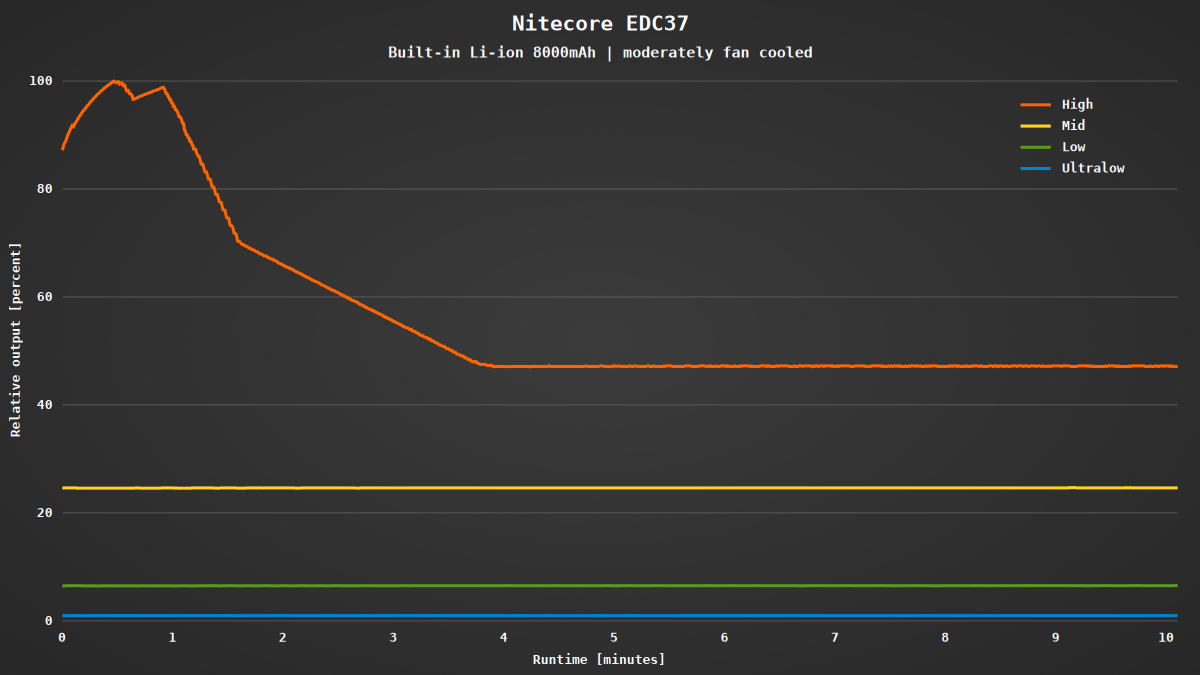
Thanks to the EDC37’s temperature regulation, cooling also affects brightness and runtime. Without airflow, brightness is reduced more aggressively, but this also extends the runtime. During continuous use, the temperature stabilizes at around 40 °C. (Since the heat sink is partially shielded, my measurement might not be very accurate.)
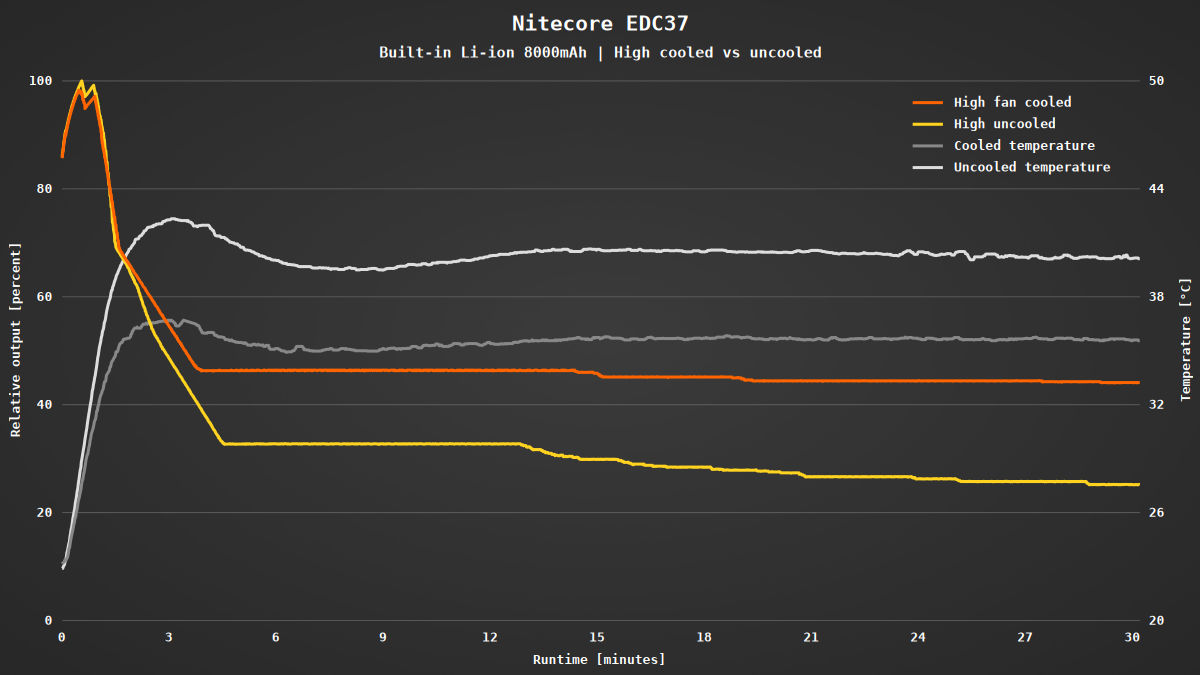
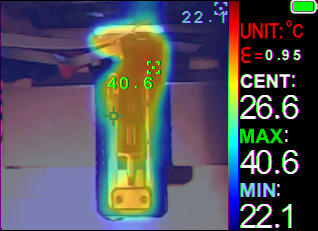
IR image with Zoyi ZT-R01
The situation is different with repeated use of the turbo modes. After a short time, the heat sink can reach temperatures up to 60 °C. In this case, the turbo mode is disabled to prevent overheating. It then takes several minutes for the flashlight to cool down enough to use turbo again.
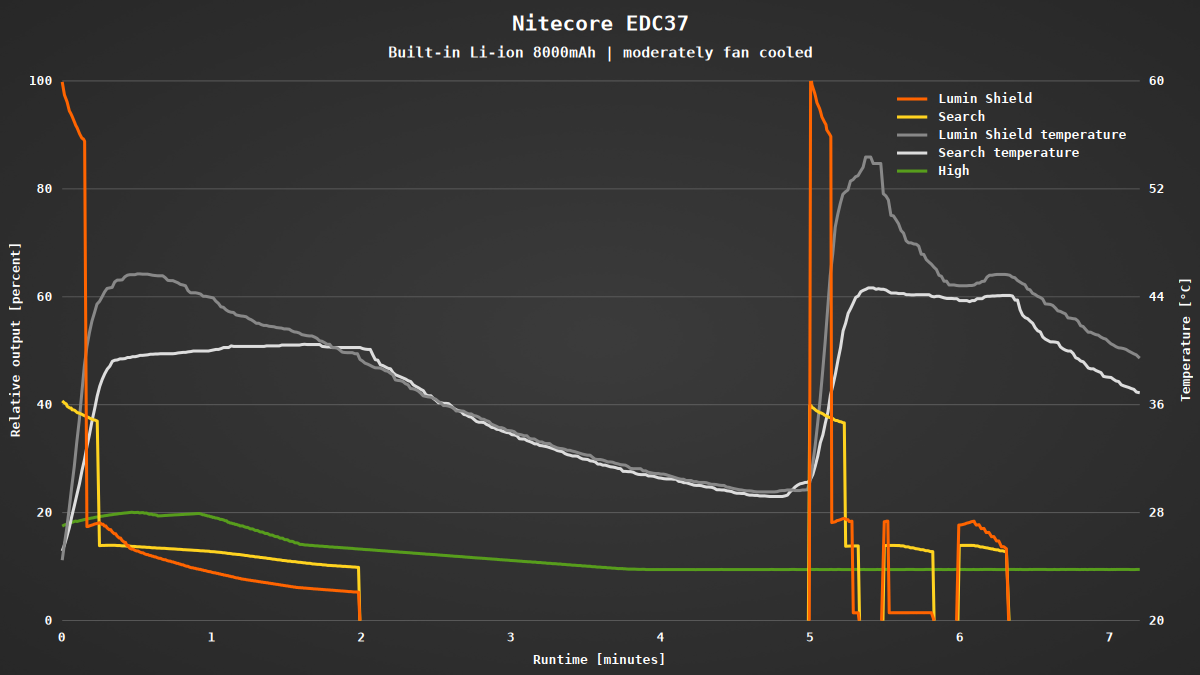
Because of the built-in battery, power consumption couldn’t be measured directly. When the battery is empty, the flashlight shuts off completely. All brightness levels are regulated by a constant current driver without PWM. Using an oscilloscope, only in Mid mode a slight ripple at 8 kHz could be detected, which remains completely invisible to the eye.
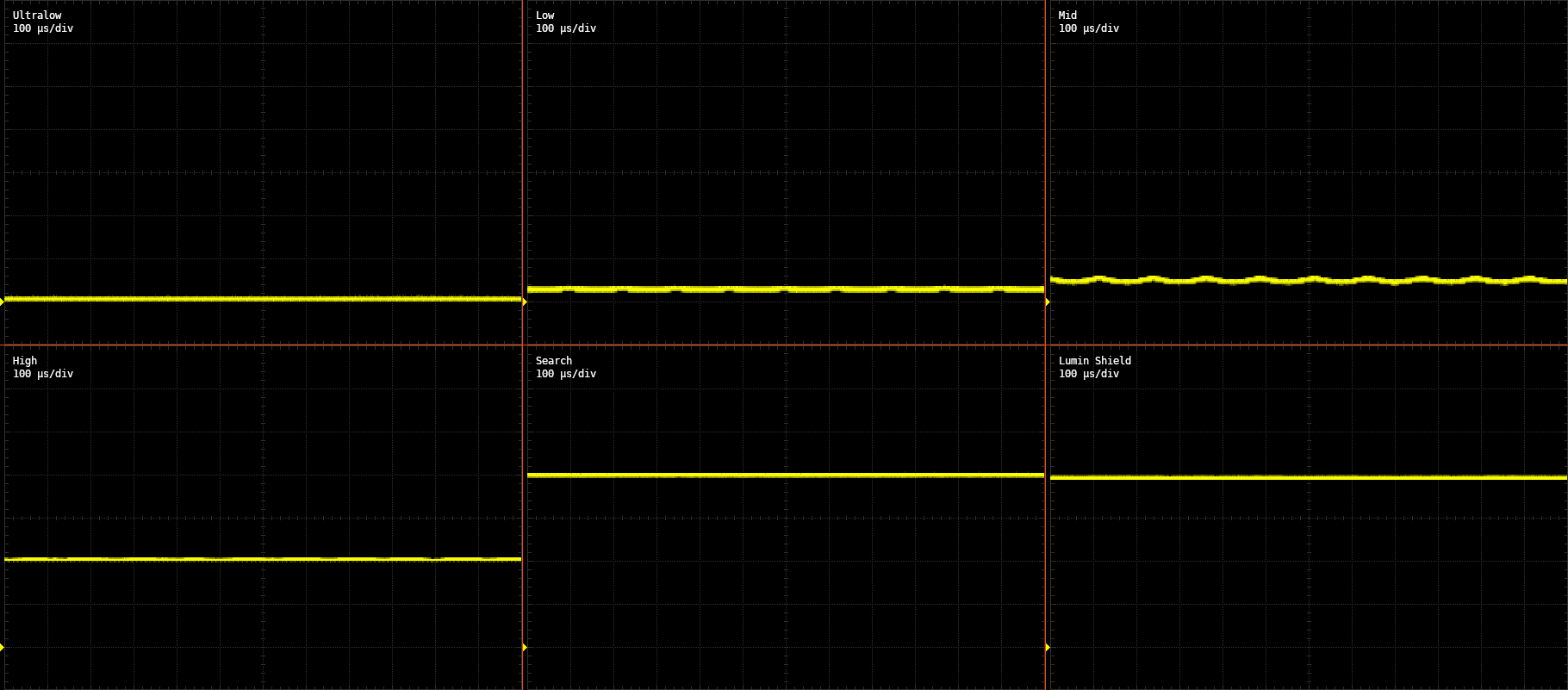
Conclusion
Was it worth the wait? Absolutely! The Nitecore EDC37 combines many of the best features from previous models.
The two “UHi 20 MAX” LEDs – already known from the EDC29 – now deliver up to 8000 lumens. Of course, this high brightness in such a compact flashlight can’t be sustained for long. The heat sink is protected from direct contact, making handling more comfortable. One of the two dual-stage buttons can be programmed at both stages, and the “Rapid Lock” switch allows for quick and easy lockout at any time. It would be nice to have the option to freely choose between a wide and narrow beam at every brightness level. The built-in 8000 mAh battery offers long runtime, though its non-replaceable nature may be seen as a downside.
All in all, the Nitecore EDC37 is an impressive flashlight.
